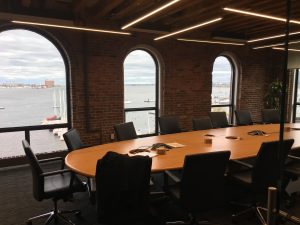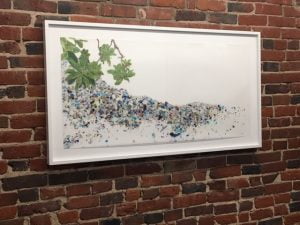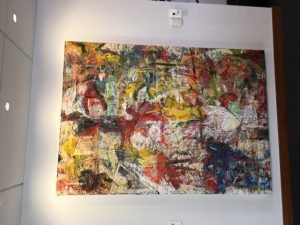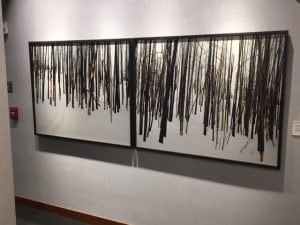Better Than Most is a regular feature of The Business of Giving, examining the best places to work among social good businesses and nonprofit organizations.
Denver: For this edition, we find ourselves on Atlantic Avenue in Boston, Massachusetts and at the headquarters of The Barr Foundation. We’ll begin with their president, Jim Canales, and then hear from some of the other members of the staff.
Jim: Well, with regard to culture, I have to give credit where credit is due. And I give all credit for the culture at The Barr Foundation to our co-founders. Barbara and Amos Hostetter have created a culture at The Barr Foundation that is one deeply rooted in humility, that is around kindness and respect for the people that we work for, but all in the context of excellence and rigor and quality. And those happen to be values that I personally care deeply about.
One of the values that we spoke about was curiosity and the importance of maintaining that spirit of curiosity, and I think it’s in some ways a different kind of expression of humility. It’s a sense that we at the foundation don’t have all the answers, and one of the ways that we manifested that is by being openly curious by asking lots of questions, by trying to be learners about the work that we’re doing and always feeling that there’s more that we can learn. And I think that’s- when I think about innovation, I think it’s bringing that spirit of curiosity, that quest for learning to our work, that I think ultimately leads us to be more open to new ideas and ideally more innovative

Kalila: I think the kind of person that fits in here is someone who is a good communicator, is capable of working on a team, who contributes in a way that’s not just about them moving forward, but moving the work forward, someone who likes to eat, someone who has a good sense of humor, and enjoys nice views at the waterfront.
Kerri: Another one is our candy bowl that we have in our reception area, and this is a very important piece of material that we have here. Jaime is one of the folks that just makes sure that we are always in stock, and he’ll know if we’re going through a heavy work period where there are a lot of deadlines because you’ll see the chocolate disappear really quickly, and you’ll go out to the reception area, and all you’ll see are the gummy candies that nobody wants but by the end of it, you’re going to take it, because that’s what’s left.
Jaime: Program officers and anyone here at Barr, are always open to talk to people about their experiences and provide them with ideas and suggestions on professional development opportunities and also make sure that people have the opportunity to learn about the work that they are doing. Not only at a programmatic level, but also with grantees. A good example is when program officers open the opportunity for other staff members to join them during site visits and to learn about the work that grantees are doing.
Trevor: And throughout that whole time, our leadership has been very intentional about focusing on organizational culture and maintaining a really strong culture and set of values, and in particular, a sense of humility that our co-founders very much bring to everything they do and instilled in the foundation early on, and there’s been a real intentionality around maintaining that and also getting through what could be growth pains.
Samantha: I’ve been at Barr for a little over a year and a half, and I think what stands out to me the most is that no matter what position you’re in, what your title is here at Barr, there’s always an opportunity for all voices to be heard, and I think this really stands out. In particular, we have a lot of working groups across program committees where we come around a problem of practice, and we can really brainstorm and figure out creative solutions, and it’s not only for our internal processes but to also better the work for our grantees and redesign the efforts that make our grantees feel supported.
 Mary: I wanted to just mention one other ritual that we have at the foundation which is kitchen duty. Each Barr staff, no matter if they’re in a leadership role or an assistant role, takes turns emptying the dishwasher and stocking the fridge in our kitchen. I think it just reflects the fact that we view Barr as a community, and we play equal roles in it.
Mary: I wanted to just mention one other ritual that we have at the foundation which is kitchen duty. Each Barr staff, no matter if they’re in a leadership role or an assistant role, takes turns emptying the dishwasher and stocking the fridge in our kitchen. I think it just reflects the fact that we view Barr as a community, and we play equal roles in it.
Kalila: One thing that I have noticed here is that people are actively working on how do we use our time together effectively, and how do we ensure that there are goals and agenda for the meeting, that there is next steps, so that we can really keep the conversation and the work moving forward. It’s good to have that intentionality across the organization, because I’m sure all of us have had experiences where we’re like “This could’ve been an e-mail, yet here we are spending an hour talking about things,” so I really appreciate that.
Kerri: And in addition to that, people are very respectful and value that work-life balance where they want you to spend the time with your children, with your family doing things other than just focusing on the work, and people here really walk the walk and talk the talk, so those who are passionate and committed to the mission and the values of the organization, that carries through to their personal life, whether it’s trying to volunteer for different things or the matching gift program that they’ve instilled for staff to utilize where they will match a donation that a staff person makes times three.
Jaime: I want to talk about employee engagement, and how the foundation makes sure that everyone feels included. We did an office renovation problem about two years ago, and as part of the renovation project, our president and our two co-founders had several meetings to get a general idea of what they wanted to see in the office. After that initial conversation, it was all staff-driven. For example, when it comes to the furniture around the office, we got to pick the chairs that we felt that were the best for all of us. When we had the opportunity to choose the desks, tables, and other items around the office, we were given the option to look at different alternatives and go with the one that most people liked.
 Kimberly: Because it was a medical condition, I wasn’t quite sure how long I was going to need to be out, and so I had asked for permission to carry an extra week of vacation from the prior year in, so that I would have a little more flexibility, and not only was I able to step out and do what I needed to do to care for my family and have the support of my colleagues, not only before I left, but also text messages and check-ins and everything while I was away, but when I came back, I also noticed that that policy had changed for everyone in the organization, so that we could all have a little bit more flexibility at the points when we needed it, and I think that’s just an example of how this organization operates.
Kimberly: Because it was a medical condition, I wasn’t quite sure how long I was going to need to be out, and so I had asked for permission to carry an extra week of vacation from the prior year in, so that I would have a little more flexibility, and not only was I able to step out and do what I needed to do to care for my family and have the support of my colleagues, not only before I left, but also text messages and check-ins and everything while I was away, but when I came back, I also noticed that that policy had changed for everyone in the organization, so that we could all have a little bit more flexibility at the points when we needed it, and I think that’s just an example of how this organization operates.
Trevor: You asked about performance assessment. That’s taken very seriously here. There’s a structured, annual process that is always being improved upon as well, and I think one of the more notable aspects of it is that staff are asked to discuss or write in their self-assessment about, not only about their professional development goals, but their career goals, not just at Barr, but more generally, and that during the performance assessment discussions that staff and their supervisors have throughout the year, openness is encouraged. If people are thinking about work outside of Barr or beyond Barr, their next step, the organization wants to be supportive of that, which makes a lot of sense, but not many organizations very explicitly encourage that level of openness.
Mary: I would add that a wow for the Barr Foundation to me is how we conduct our board meetings. Every single staff member is present at the board meeting, which speaks to creating a transparent process where everyone has a seat at the table when the decisions are made.
Kimberly: I think one of the things that comes to mind is the fact that even the development of an internal diversity, equity, and inclusion working group came about in part because as a group, we were having conversations and feeling like we wanted to do more, and it wasn’t that someone in senior leadership said we’re going to set up a committee. It’s because it came up from within our staff team that it was something that we were interested in, so that group is now sort of a test ground that brings ideas and gets feedback around how we move forward as a group for the entire organization.
Samantha: Along the lines of professional development, I think we have a real culture of mentorship here, and not only within our program teams. Particularly, in our program teams, I’ve learned so much from our director who leads the strategy and also our program officers, and I have had the privilege of being able to touch all the aspects of our grant-making process and working with different people across the organization with Grants Management, with Operations, and with other teams, and everyone’s really helped deepen my knowledge and content knowledge, and also skillsets.
Kerri: They did a stop-motion video, a time-lapse video, and she really took our values and our mission to heart and interpreted them into this just extraordinary piece from when you walk toward the doors, and you see the living wall which is green and beautiful. And then right from the next wall, you have the green space and then you’ve got this fluid set of varying shapes. And just this beautiful color tone that incorporates just all of the warmth and the passion for our visitor to experience when they come in. And people seem to just genuinely love it. It’s just another wonderful aspect when you come in to see the beautiful art pieces and know that not only are we working with incredible people who are passionate about art but that we have some beautiful pieces for folks to enjoy when they are here.

Denver: I wanna thank Jane Joyce for helping to arrange my visit and to all those who participated in this piece: Kalila Barnett, Kerri Hurley, Jaime Lopez, Kimberly Haskins, Trevor Pollack, Samantha Alper, and Mary Chalifour. If you like to hear this again, read the transcript or see pictures of the participants and the offices, just come to denver-frederick.com and we’ll have there a link to my full interview with Jim Canales, the President of The Barr Foundation.
The Business of Giving can be heard every Sunday evening between 6:00 p.m. and 7:00 p.m. Eastern on AM 970 The Answer in New York and on iHeartRadio. You can follow us @bizofgive on Twitter, @bizofgive on Instagram and at http://www.facebook.com/BusinessOfGiving




